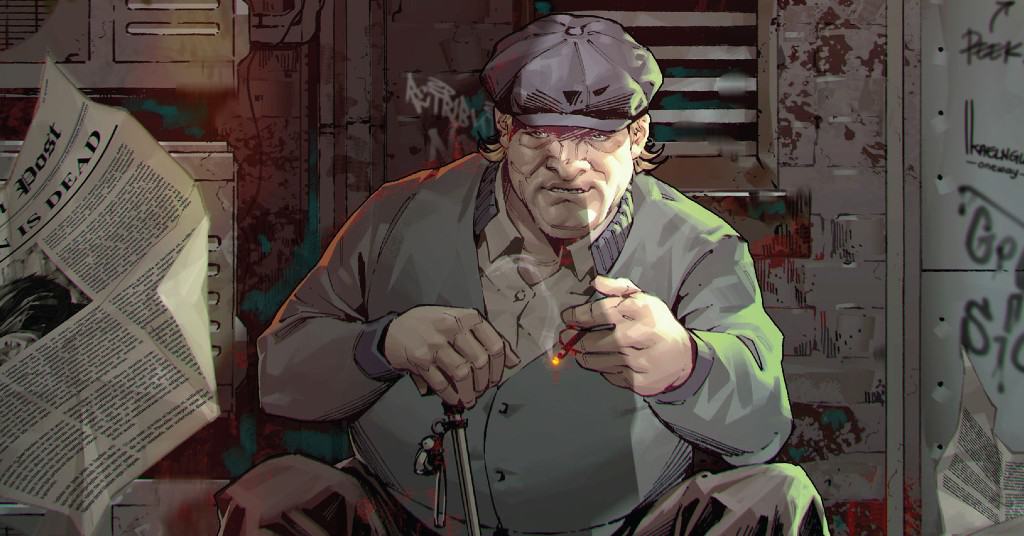Penguin #1
Recap
After retiring to Metropolis following his death, Oswald Cobblepot finds himself forced back into the unpredictable and violent Gotham City underworld as a pawn for the United States intelligence community! Gotham's criminal element has been evolving since he was last in the city, with his bastard twin children ruling the Iceberg Lounge. And what of the man he framed for his death--Batman? Is the Penguin walking into a death sentence?
Review
Everyone thinks Oswald Cobblepot is dead. Readers of Penguin #0, of course, know that he’s not and is in fact running a flower shop in Metropolis. But that is about the only thing that carries over from the prologue issue to Penguin #1 which kicks off the beginning of a new crime thriller/drama.
Oswald Cobblepot is getting measured for a new suit as Penguin #1 opens. He follows that up with a walk in the park where he feeds the birds and eventually arrives home for the evening with his attractive lover, Rita. Throughout the day he is observed by some unknown individual who is trying to provoke him, giving them an excuse to apprehend him. Their opportunity comes the next day after a disagreement with a customer. Agent Espinoza takes him into custody and puts him in an interrogation room. She extorts him into going back to Gotham, reclaiming his criminal empire, and working for the government.
King spends most of Penguin #1 digging deep into Oswald’s new life, establishing him as a man with a frightening criminal past, a touching but complex romantic relationship, and a dangerous hostility toward people in general. King builds up Oswald’s bona fides as a dangerous, downright scary criminal. Mostly this is accomplished via narration. While that may seemingly violate the oft quoted “show don’t tell” rule, the different points of view create a more rounded-out character in one issue than Oswald’s own actions could likely accomplish.
Perhaps the most interesting choice in using this narration, though, is that none of it comes from Oswald’s point of view. While he is the definite main character, we’re never made privy to what he’s thinking. It’s a surprising choice. After all, King is trying to make the character into much more than just a Batman villain. But not being privy to Oswald’s thoughts makes his actions at the end of the issue more shocking than they would otherwise have been. They serve as almost an exclamation point on everyone else’s thoughts. The issue tells us what people think Oswald is. Only then does it show us who he really is.
De Latorre has a particular talent when it comes to getting at a character’s emotions, motives, and even underlying truths via the detail in their expressions. He contours characters’ faces not so much with heavier lines but subtle shading. It highlights cheekbones, the pull of skin as a character smiles or screams, the weight in Oswald’s face, the tighter forehead and narrowed eyes when a character goes from pleasant to angry. DeLatorre delivers a lot of subtext to support and elevate what King is saying explicitly in his narration and dialogue.
De Latorre’s style is also a complement to Maiolo’s colors in Penguin #1. The subtle shading on the characters and settings makes everything feel rough. But it’s the coloring choices that truly create this world. Washing out the colors, making the issue look drained as opposed to vivid, creates the same mood as any hard boiled or noir film. As King’s writing seeks to reframe the story and character last seen in Penguin #0, Maiolo’s colors likewise reframe the world that this story and character inhabit.
Cowles’ lettering is largely effective. It stumbles in one respect–using gray as the background for both Batman and Agent Espinoza’s caption boxes. There are minor differences between the two and the two characters don’t appear in scenes that are close together so it isn’t confusing. But further differentiating the two might have been more effective, underlining the two characters’ distinct points of view on Oswald (as the other characters’ captain boxes do).
The font choice for those boxes, though, is very successful. The narration in the issue is all presented in a standard upper case for the first letter of a sentence and lower case for everything else. The dialogue, on the other hand, is entirely upper case. The contrast makes the narration feel quieter and in that way closer to the vest than the louder and up front dialogue.
Final Thoughts
King once again takes a series decisively into noir and hard boiled territory with another complex, though somewhat less morally gray, strong first issue. The entire creative team realizes this vision with outstanding work. Penguin #1 is a masterclass in resetting a character and fully realizing a new world for them.
Penguin #1: A New Start
- Writing - 10/1010/10
- Storyline - 9/109/10
- Art - 9.5/109.5/10
- Color - 10/1010/10
- Cover Art - 9/109/10
